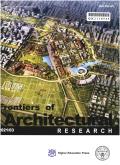云南腾冲混合框架悬臂桥的技术与工艺——以叶竹青大桥为例
IF 3.6
1区 艺术学
0 ARCHITECTURE
引用次数: 0
摘要
本研究以云南腾冲龙川河混合框架悬臂桥为例,研究了混合框架悬臂桥的结构特点和技术原理。这样的桥梁融合了多种建筑技术,包括倾斜悬臂,铁链,三面拱门和支柱框架,展示了文化融合形成的地区的工艺特征。本文首先根据桥梁的形态分析结构设计和力学原理,然后考察施工细节,了解材料的选择,重建制作方法,探索工艺思维。研究结果表明,在结构设计中,铁链、支柱框架和三面拱门在悬臂桥中各自承担不同的承重作用,使其能够实现大跨度。通过协调结构构件,这种桥在施工过程中不需要脚手架,而是依靠构件本身在整个施工过程中相互支撑。在施工细节上,木桩等元素的巧妙安排,在保证整体完整性和稳定性的同时,增加了施工的方便性和精度。此外,本研究还考察了现有的结构脆弱性和过去的修复问题,为未来的保护工作提供了见解。本文章由计算机程序翻译,如有差异,请以英文原文为准。
Techniques and craftsmanship of the hybrid framing cantilever bridges in Tengchong, Yunnan, China: A case study of the Yezhuqing Bridge
This study examines the structural characteristics and technical principles of the hybrid framing cantilever bridges along the Longchuan River in Tengchong, Yunnan, China, taking the Yezhuqing Bridge as a case example. Such bridges integrate diverse construction techniques—including inclined cantilevers, iron chains, three-sided arches, and strut frames—showcasing the craftsmanship characteristic of a region shaped by cultural blending. This paper first analyzes the structural design and mechanical principles based on the bridge's form, and then examines construction details to understand material selection, reconstruct fabrication methods, and explore craftsmanship thinking. The findings reveal that in the structural design, iron chains, strut frames, and three-sided arches each take on distinct load-bearing roles in a cantilever bridge, enabling it to achieve a large span. By coordinating structural components, this bridge type does not require scaffolding during construction, instead relying on the components themselves for mutual support throughout the building process. In terms of construction details, skillful arrangement of elements like wooden pegs enhances convenience and precision during construction, while ensuring overall integrity and stability. Additionally, this study examines existing structural vulnerabilities and past restoration issues, providing insights for future conservation efforts.
求助全文
通过发布文献求助,成功后即可免费获取论文全文。
去求助
来源期刊

Frontiers of Architectural Research
ARCHITECTURE-
CiteScore
6.20
自引率
2.90%
发文量
430
审稿时长
30 weeks
期刊介绍:
Frontiers of Architectural Research is an international journal that publishes original research papers, review articles, and case studies to promote rapid communication and exchange among scholars, architects, and engineers. This journal introduces and reviews significant and pioneering achievements in the field of architecture research. Subject areas include the primary branches of architecture, such as architectural design and theory, architectural science and technology, urban planning, landscaping architecture, existing building renovation, and architectural heritage conservation. The journal encourages studies based on a rigorous scientific approach and state-of-the-art technology. All published papers reflect original research works and basic theories, models, computing, and design in architecture. High-quality papers addressing the social aspects of architecture are also welcome. This journal is strictly peer-reviewed and accepts only original manuscripts submitted in English.
 求助内容:
求助内容: 应助结果提醒方式:
应助结果提醒方式:


